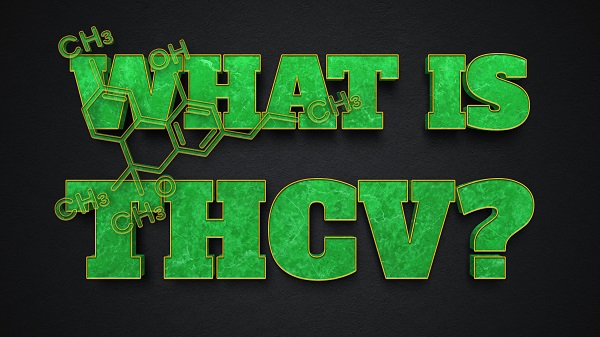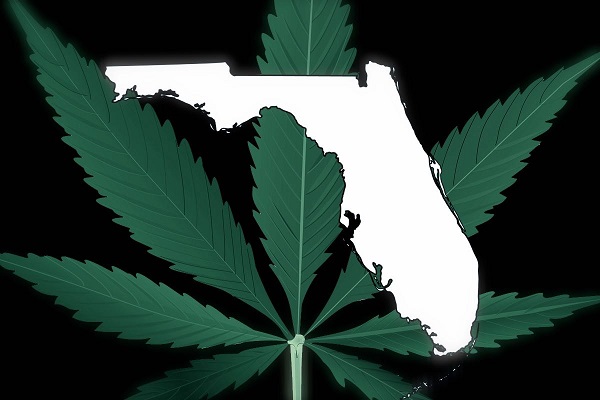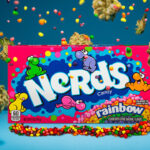THCV is one of the most significant cannabinoids from a medical perspective. At low doses, it is considered an antagonist of cannabinoid receptors, but at high doses it can act as an agonist, producing effects similar to THC.
Since its discovery in 1973 (https://onlinelibrary.wiley.com/doi/10.1002/jps.2600621045), THCV has become increasingly important in medical circles, and studies of its pharmacological properties have been conducted over the past decade. Like CBD, THCV is considered an important regulator of the immune system, especially with regard to inflammation and inflammatory pain. THCV often produces effects opposite to those of THC, although in high doses it can behave similarly to THC.
Properties of THCV
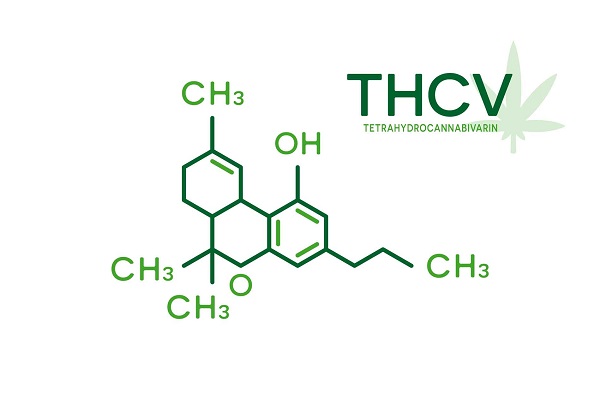
THCV is a molecule with the chemical formula C19H26O2, consisting of nineteen carbon atoms, twenty-six hydrogen atoms, and two oxygen atoms. Like all phytocannabinoids, THCV has an oily consistency and is insoluble in water, but well soluble in lipid solvents.
Structurally, THCV is very similar to THC (https://pubchem.ncbi.nlm.nih.gov/compound/tetrahydrocannabivarin). The atoms of both molecules are arranged similarly, forming a three-dimensional structure. However, unlike the pentyl group (-C5H11) in THC, the side chain of THCV consists of a propyl group (-CH2CH2CH3). THCV has different isomers, Δ9-THCV being the most common, while Δ8-THCV is less common.
THCV is not the only cannabinoid with a propyl group instead of a pentyl group. There are other propylcannabinoids similar to the major pentylcannabinoids, such as cannabidivarin (CBDV; homologue of CBD) and cannabivarin (CBV; homologue of CBN). All of these propylcannabinoids have the suffix «varin».
How is THCV synthesized?
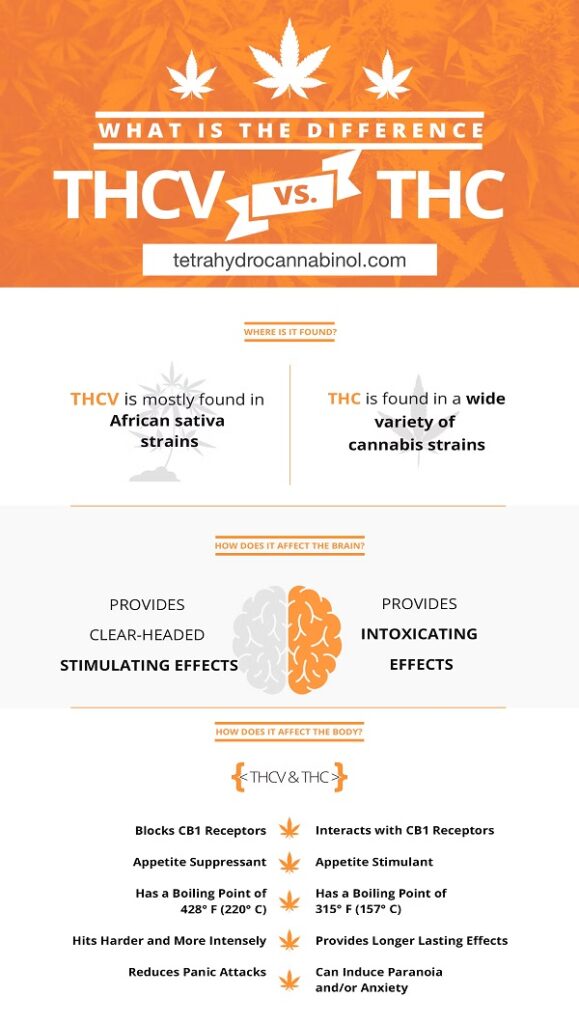
Many cannabinoids, including THC and CBD, are derived from a precursor substance, cannabigerolic acid (CBGA). Cannabigerolic acid is formed by a chemical reaction between olivetolic acid and geranylpyrophosphate.
However, THCV is synthesized by a slightly different biosynthetic pathway. Instead of interacting with olivetolic acid, geranylpyrophosphate reacts with divarinolic acid, a molecule similar to olivetolic acid but with two fewer carbon atoms.
This reaction produces cannabigeric acid (CBGVA), which then reacts with an enzyme known as THCV synthase (for each cannabinoid there is a corresponding synthase enzyme that catalyzes their biosynthesis) to form tetrahydrocannabicarboxylic acid (THCVA). THCVA is then converted to THCV via a similar decarboxylation process that occurs with THCA to produce THC.
A study published in the American Journal of Botany in 2004 examined native cannabis varieties from around the world to determine cannabinoid content and ratios. It turned out that THCV was present in all species, with higher concentrations in wild populations of C. indica originating in Central/Southeast Asia and South Africa.
In another 1973 study by a well-known pharmaceutical company, one South African strain was found to contain an astounding 53.7% THCV, while the Afghan variant contained 48.2% (www.amjbot.org/content/91/6/966.full).
Commercial cannabis varieties grown indoors do not usually have such a high THCV content. However, several strains have now been developed to maximize THCV levels, such as Doug’s Varin. This mystery strain (whose seeds do not appear to be available yet) was created and tested by Steep Hill Labs, and was found to have 21.1% THC and 24.3% THCV in the decarboxylated sample.
THCV and the endocannabinoid system
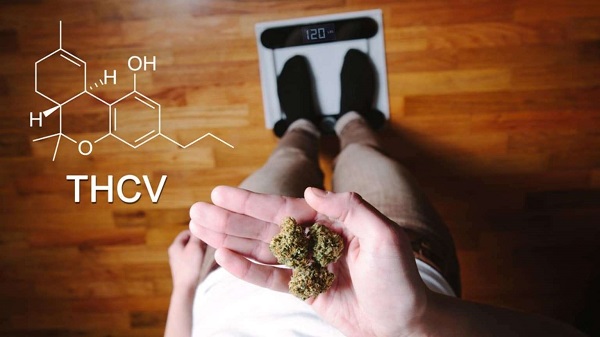
THCV, along with other cannabinoids, interacts with certain receptors in the body that are located in the brain, major organs and cells of the immune system. These receptors are specialized proteins located in the presynaptic connections between neurons. So far, two main cannabinoid receptors have been identified, type I and type II, or CB1 and CB2. There is also evidence of a third type of cannabinoid receptor.
THCV can bind to both types of receptors, CB1 and CB2. Interestingly, THCV seems to have agonistic or antagonistic effects on the CB1 receptor depending on the dosage. At low doses, THCV blocks the CB1 receptor, whereas at higher doses it acts agonistically, similar to the effects of THC (http://onlinelibrary.wiley.com/doi/10.1038/sj.bjp.0707442/full).
Thus, there are reasons to consider THCV to be another psychoactive compound, although modern science has not yet determined whether it is actually psychoactive. This is because it sometimes interacts with the CB1 receptor, through which THC has a psychoactive effect. However, it is unclear whether THCV has any real psychoactive effects. According to Steep Hill Labs, THCV acts in a more stimulating and activating way than THC and seems to counteract the sedative effect of the monoterpene myrcene.
How can THCV be used in medicine?
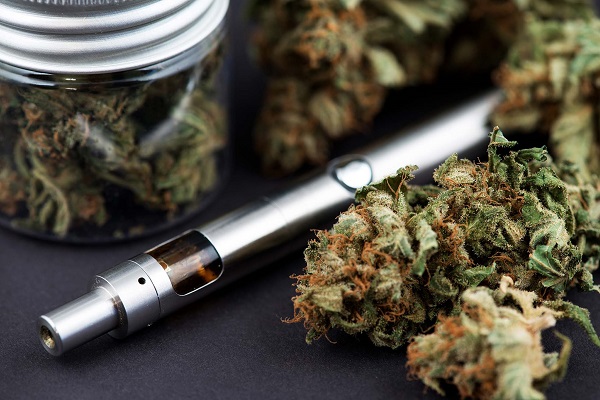
Perhaps the most fascinating aspect of THCV research is its potential to treat glucose intolerance and insulin resistance associated with obesity in diabetics. In a 2013 study, scientists injected THCV into mice with obesity, insulin resistance and glucose intolerance. Although the mice did not lose weight, their glucose tolerance and insulin sensitivity improved significantly (https://www.nature.com/articles/nutd20139). Although more human studies are needed to confirm these results, it may help obese diabetics lose weight.
Like CBDV, THCV is known for its anticonvulsant effects, a common property of most cannabinoids. The exact mechanism by which THCV reduces seizure activity is not yet known, but it is thought to involve interaction with the CB1 receptor (https://onlinelibrary.wiley.com/doi/full/10.1111/j.1528-1167.2010.02523.x). In a 2010 study published in the journal Epilepsia, scientists looked at THCV as a potential therapeutic agent for treating seizures, especially those characterized by hyperexcitability.
In addition to these two specific effects, THCV has many properties similar to other cannabinoids. It is an antioxidant, which gives it neuroprotective properties similar to CBD (https://www.ncbi.nlm.nih.gov/pmc/articles/PMC3165958/). THCV also exhibits anti-inflammatory and analgesic effects, especially in inflammatory pain such as rheumatoid arthritis (https://bpspubs.onlinelibrary.wiley.com/doi/full/10.1111/j.1476-5381.2010.00756.x).
One of the important health benefits of THCV is its ability to reduce inflammation. Although inflammation is an important immune response that can help our bodies fight infection and respond to injury, it can also cause pain and fever and contribute to a number of debilitating conditions.
A 2010 study published in the British Journal of Pharmacology showed that DVT reduces inflammation and inflammatory pain in mice . This study showed that the anti-inflammatory effects of THCV are probably due to its interaction with the cannabinoid receptors CB1 and CB2.
THCV can also stimulate bone growth because of its ability to stimulate the production of new bone cells. Studies have shown that THCV can stimulate the formation of bone nodules and collagen production, which means that it can significantly promote bone growth. Because of this, THCV shows great promise in the treatment of bone degenerative diseases such as osteoporosis, although more research is needed.
THCV study by a major pharmaceutical company
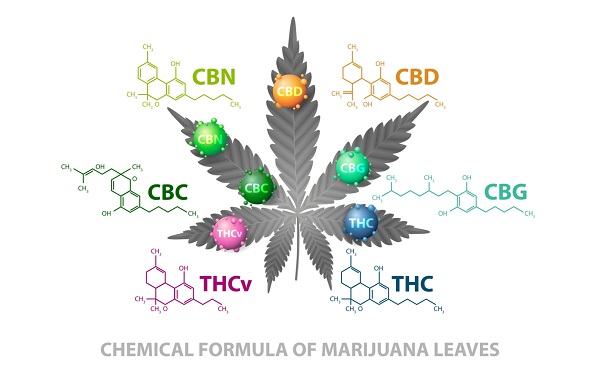
GW Pharmaceuticals has begun studying the effects of THCV on the human body and its potential to treat obesity and related metabolic disorders (https://www.gwpharm.com/about/news/gw-commences-phase-i-study-thcv-potential-treatment-obesity-and-related-metabolic). GW Pharmaceuticals had previously been active in cannabinoid research and pioneered cannabis-based pharmaceuticals. One such product was Sativex (based on THC), and later the company launched Epidiolex (based on CBD).
GW Pharmaceuticals also received a patent for the drug THCV with possible addition of CBD to treat epilepsy and generalized seizures (https://patents.google.com/patent/CN102596322A/en?q=THCV&assignee=GW+pharmaceutical&oq=GW+pharmaceutical+THCV). The company’s goal is to enhance the anticonvulsant effect of CBD by incorporating THCV into the drug.
In many aspects, THCV is similar to THC. However, its medical use may be more appealing to some people because it may not have psychoactive effects or at least have less psychoactive effects compared to THC. This may make the therapeutic properties of THC available to those who prefer non-psychoactive treatments.
Research on THCv in humans is modest, but a 2015 study on cannabis showed that it can reduce some of the negative effects of THC.
There is growing evidence that THCv may help with Alzheimer’s disease. Tremors, motor control and brain lesions associated with Alzheimer’s disease appear to improve with THCv, but research is ongoing.
A May 2020 article published in the journal Biochemical Pharmacology indicates that THCv may stimulate bone growth. Because it promotes the development of new bone cells, THCv is being studied for osteoporosis and other bone-related diseases.
FAQ
Is THCV legal?
THCv is controversial in terms of legality. Although THCv and THC are structurally very similar, it is not directly banned in the United States at the federal level, but it is still a gray area. Generally, products with less than 0.3% THC are federally permitted.
Under the Controlled Substances Act, THCV does not fall under the definition of “cannabimimetic agents.” Nor does it fall within the definition of “tetrahydrocannabinols,” which are also banned.
However, the 2018 Farm Bill allows cannabinoids derived from hemp, such as THCV, although cannabis and cannabis extracts are banned.
THCV can be considered structurally similar enough to THC to be considered a Schedule 1 substance under the Federal Analogues Act . However, legal and scientific minds well versed in the marijuana industry believe that THCv is different enough that it is not classified as an analog and classified under the prohibited label “tetrahydrocannabinol.”
As a rule of thumb, THCV should be legal in states that have also legalized marijuana/THC for recreational and medical use. But always check the laws in your state before buying any marijuana product.
Is THCV natural or synthetic?
Cannabis plants naturally contain THCV. THCVA, a byproduct of cannabigerolic acid (CBGA), is converted into THCV by exposure to light or heat.
Is THCV intoxicating?
You can only get intoxicating effects from THCV if you consume it in very large quantities. This is because cannabis flower, which is rich in THCV, will also contain THC, and THC is intoxicating.
Does THCV detect a drug test?
In short, yes. Drug test will show THCV.

